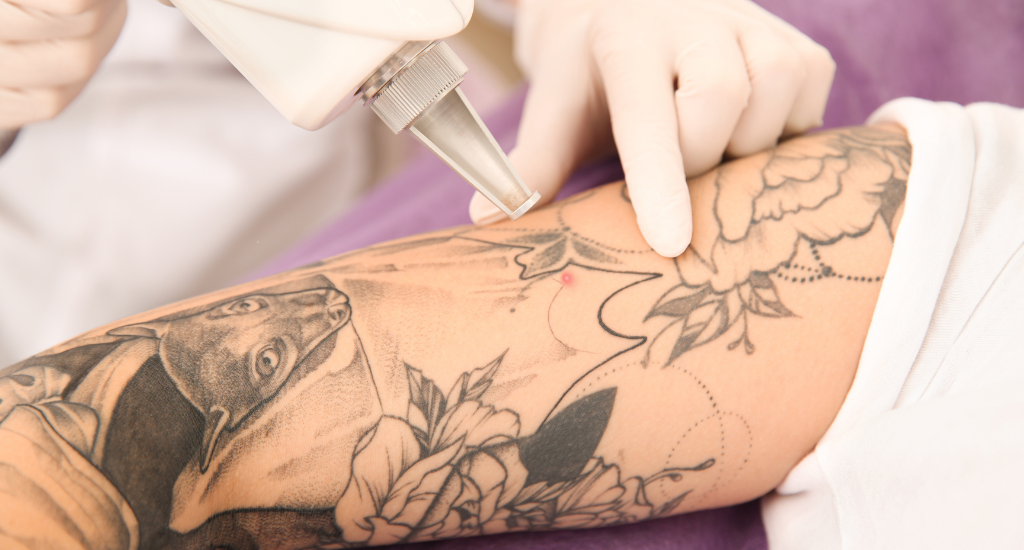Tattoos have become increasingly popular in recent years, allowing individuals to express their individuality and creativity. However, as time passes, some people may find themselves desiring to remove their tattoos for various reasons.
Tattoo removal has also seen a surge in demand as a result. Before embarking on the journey of tattoo removal, it is essential to understand the process thoroughly and be aware of important considerations. This article aims to provide you with crucial things you need to know before undergoing tattoo removal.
Factors Influencing Tattoo Removal
I. Tattoo size, color, and location
The size, color, and location of a tattoo can significantly impact the removal process. Larger tattoos may require more sessions, while certain colors, like black or dark blue, are generally easier to remove than lighter shades. Additionally, tattoos located closer to the heart, such as on the chest or back, tend to fade more slowly than those on the extremities.
II. Age and quality of the tattoo
The age of the tattoo plays a role in the removal process. Older tattoos tend to fade more easily compared to newer ones. Moreover, professionally done tattoos with quality ink penetrate the skin more evenly, making them generally easier to remove than amateur tattoos.
III. Skin type and sensitivity
Different skin types and levels of sensitivity can influence how the skin reacts to tattoo removal treatments. Individuals with darker skin tones may be at a higher risk of developing complications such as hypopigmentation or hyperpigmentation. It is crucial to consult with a professional to determine the most suitable removal method for your skin type.
Different Tattoo Removal Methods
I. Laser tattoo removal
Laser tattoo removal is the most common method employed today. It works by delivering intense laser beams that break down the tattoo ink into smaller fragments, allowing the body’s immune system to gradually eliminate them. Laser treatment sessions are spaced several weeks apart to allow the skin to heal. While effective, laser removal may cause potential side effects such as redness, swelling, or blistering.
II. Surgical tattoo removal
Surgical excision involves physically cutting out the tattooed skin and stitching the wound closed. This method is more suitable for smaller tattoos and may leave behind a scar. Candidates for surgical removal should consult with a dermatologist or plastic surgeon to determine if they are suitable candidates for this procedure.
III. Dermabrasion and chemical peels
Dermabrasion and chemical peels involve removing the top layers of the skin to gradually fade the tattoo. These methods are typically used for older or faded tattoos and may require multiple sessions. However, they can be more invasive and may result in discomfort and potential side effects such as swelling or changes in skin texture.
IV. Tattoo removal creams and lotions
Topical creams and lotions claim to gradually fade tattoos over time. While they may seem like a convenient option, their effectiveness is generally limited, especially for deep-rooted ink. Additionally, the use of these creams can cause skin irritation or allergic reactions.
Preparing for Tattoo Removal
Before undergoing tattoo removal, it is essential to be well-prepared:
| ✔ Consultation with a professional | Schedule a consultation with a reputable tattoo removal specialist to assess your specific situation, discuss treatment options, and determine realistic expectations. |
| ✔ Understanding the cost and number of sessions required | Tattoo removal is a process that often requires multiple sessions. Discuss the estimated number of sessions and associated costs with the specialist to plan accordingly. |
| ✔ Skin care before and after the procedure | Follow the skincare regimen recommended by the specialist before and after each removal session. Properly moisturizing and protecting the skin can aid in the healing process. |
| ✔ Managing pain during the removal process | Tattoo removal procedures can be uncomfortable, but various numbing creams or local anesthesia options can help manage pain during the sessions. |
Aftercare and Recovery

Proper aftercare is crucial to ensure optimal results and minimize potential complications:
| Importance of following aftercare instructions | Follow the post-treatment instructions provided by your specialist diligently. This may include keeping the treated area clean, avoiding excessive sun exposure, and applying recommended creams or ointments. |
| Common side effects and their management | Expect temporary side effects such as redness, swelling, or blistering. These can usually be managed with cool compresses, over-the-counter pain relievers, or prescribed ointments. |
| Promoting healing and reducing scarring | To promote healing and reduce the risk of scarring, avoid picking at scabs or exposing the treated area to excessive moisture or friction. Protect the area from the sun and apply sunscreen as recommended. |
| Recognizing signs of complications | While rare, complications such as infection or excessive scarring can occur. Contact your specialist if you experience severe pain, persistent redness, pus, or other signs of infection. |
Realistic Expectations
It is crucial to have realistic expectations when undergoing tattoo removal.
Complete removal may not always be possible, especially for tattoos with vibrant colors or significant ink saturation. The goal is often to fade the tattoo to a point where it is less noticeable or easier to cover up.
Also, each individual’s response to tattoo removal can vary based on factors such as skin type, tattoo quality, and removal method. Patience and persistence are key throughout the process.
Lastly, tattoo removal is a gradual process that requires multiple sessions. It is important to remain patient and committed to achieving the desired results.
Potential Risks and Complications
While tattoo removal is generally safe, there are potential risks and complications to consider:
| Infection and allergic reactions | As with any procedure involving the skin, there is a risk of infection or allergic reactions to the removal process or aftercare products. Following proper hygiene and using recommended products can help minimize these risks. |
| Changes in skin texture and pigmentation | Tattoo removal can sometimes lead to changes in the texture or pigmentation of the treated area. These changes are often temporary but may persist in some cases. Discuss potential risks with your specialist. |
| Scarring and keloid formation | Scarring is a possible outcome of tattoo removal, particularly with surgical excision. Individuals prone to keloid formation should be particularly cautious and discuss alternative options with their specialist. |
| Avoiding sun exposure and proper sun protection | Treated skin is more sensitive to sunlight. Protect the area from sun exposure by covering it or applying sunscreen with a high SPF to minimize the risk of pigmentation changes. |
Alternative Options to Tattoo Removal
If complete tattoo removal is not the desired outcome, there are alternative options to consider:
✔ Tattoo cover-ups and modifications
Consult with a professional tattoo artist who specializes in cover-ups to explore creative ways to incorporate your existing tattoo into a new design or modify it to better suit your preferences.
✔ Tattoo lightening for a new design
In some cases, lightening the tattoo through removal methods can create a blank canvas for a new design or allow for more flexibility in modifying the existing tattoo.
✔ Embracing the existing tattoo
Sometimes, embracing and accepting the existing tattoo as a part of your personal journey may be the most fulfilling option. It can be a reminder of a specific time or experience in your life.
Emotional and Psychological Considerations
Tattoo removal can have emotional and psychological implications. The impact on self-image and self-esteem should be considered, as the removal process may uncover emotions and memories associated with the tattoo. It’s important to be prepared to cope with these aspects and seek support from loved ones or professionals if needed.
The Bottom Line – Make Informed Choices for Successful Tattoo Removal

When you embark on the process of tattoo removal, it requires careful consideration of various factors. Understanding the factors influencing tattoo removal, the different removal methods available, and the importance of pre- and post-care will contribute to a successful outcome.
It is essential to have realistic expectations, be aware of potential risks, and explore alternative options. Also, remember, tattoo removal is a personal journey that requires patience, perseverance, and self-care. Whatever decision you make, ensure it aligns with your personal values and goals.

